Research findings suggest that the tserkva of Protection of the Most Holy Mother (Pokorov) was built in the 1600s or the 1700s. Today it is a Roman Catholic church, a branch of the parish of Our Lady of Consolation in Korczowa. Its current appearance is a result of alteration works carried out in the 1800s.
The three-part log tserkva has a rectangular layout, and comprises an octagonal drum over the nave, covered with a pyramid roof topped with a small cupola. The remaining, two-pitched roofs are of varied height and are clad with sheet metal. In the middle of the height of the walls there is a wide skirt roof supported on log tails. A sacristy was added along the southern wall and a porch along the western wall. The portals and the window framing from 1733 have the shape of ogee arch with decorative carvings. The southern doors leading to the nave and the sacristy doors feature robust decorative locks made by 18th century blacksmiths.
The nave walls are embellished with figural and ornamental paintings from the late 19th/early 20th century. The lush interior furnishings include the iconostasis, gradually crafted between the 1600s and the 1900s, two side altars from the 1700s, the high altar from the early 1900s, icon of Pieta dating from the 1700s, and procession cross from the 1700s.
Next to the tserkva we can see an 18th century wooden post-and-beam belfry.
The local Greek Catholic parish in the period from 1852 to 1870 was headed by priest Mykhailo Verbytsky, composer of Shche ne Vmerla Ukrainy ni Slava, ni volia, today the State Anthem of Ukraine. He was buried in the cemetery near the tserkva. Members of the academic choir “Bandurist” founded a lyra-shaped tombstone, which was placed on Verbytsky’s grave.
A lagend says that the tserkva once stood in a town of Dorpaty, which was burnt to the ground by Tatars in 1672. Only a hamlet of Haki survived, later to be called Mielniki and then Młyny. The town was never rebuilt, and the tserkva was pulled by oxen to Młyty to the current location.
Photos: Krzysztof Zajączkowski, Podkarpackie Regional Tourist Board
Gallery
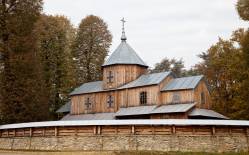
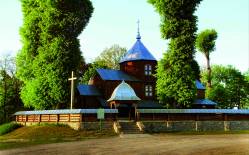
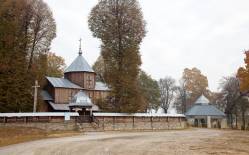
Recommended venues on the Trail
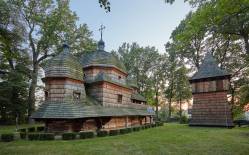
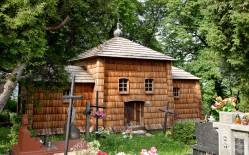

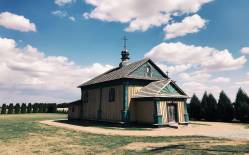



This website has been modernized with the financial support of the European Union under the Cross-Border Cooperation Programme Poland-Belarus-Ukraine 2014-2020. The responsibility for its content lies solely with the Podkarpackie Regional Tourism Board and cannot, in any case, be treated as a reflection of the position of the European Union, the Managing Authority, or the Joint Technical Secretariat of the Cross-Border Cooperation Programme Poland-Belarus-Ukraine 2014-2020.









